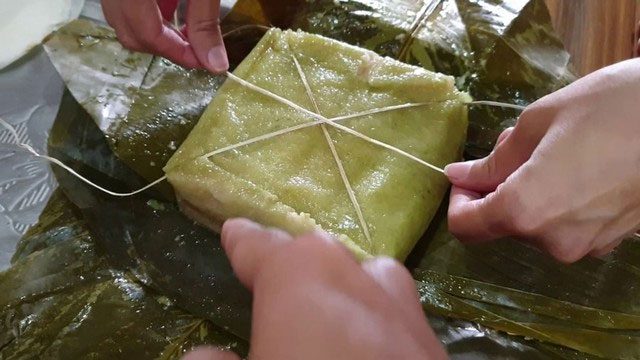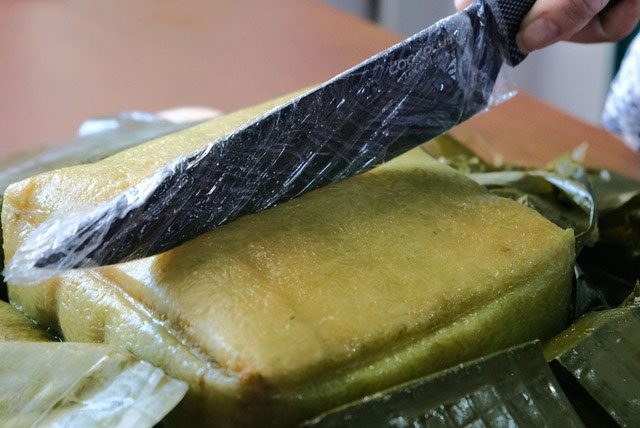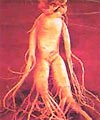The days leading up to Tet are filled with countless stories related to various topics such as cuisine, the arrangement of the five-fruit tray, and auspicious days. One particularly hot topic that arises year after year is the correct way to cut Bánh Chưng.
Bánh Chưng is a traditional food that symbolizes the Tet holiday, and every household should have a few to offer during the first days of the new year. The cake is quite large with a substantial filling, making it challenging to cut. Traditionally, Vietnamese people use strings to cut Bánh Chưng instead of a knife, as a knife tends to stick to the sticky rice, making it difficult to cut and clean. However, this method requires skill, which can be challenging for younger generations, especially Generation Z.
Recently, an innovative method for cutting Bánh Chưng using a knife has emerged, with an important improvement that makes the process easier and faster. This tip has appeared on social media for a few Tet celebrations, and many people have successfully tried it.
Here’s a detailed guide on how to cut Bánh Chưng using both methods:
1. Cutting Bánh Chưng with Strings
Gently remove the cake from the leaves, choose strong and durable strings, clean them, and then divide them into four equal strands. Place two strings in the middle to form four squares, then place two diagonal strings connecting the four corners of the Bánh Chưng, dividing it into eight pieces. Make sure to mark the order of the strings as 1, 2, 3, 4 for convenience during cutting, by tying knots at the ends of the strings.
Press the strings firmly against the Bánh Chưng to secure its shape. Use a flat plate on top and flip it over, peeling off the leaves from the other side. Be careful not to peel the leaves horizontally, as this can cause leaf fragments to stick to the cake.

Cutting Bánh Chưng with strings is a traditional method that has been used for generations.
Sequentially tie the strings from outside to inside in the order of 1, 2, 3, 4 to cut into equal pieces.
Finally, hold the ends of the strings firmly against the Bánh Chưng and gently pull them out horizontally. Be careful not to lift the strings too high, as this could disrupt the filling and cause it to spill out.
The advantage of this method is that it utilizes the available strings of Bánh Chưng, promoting attention to detail to achieve evenly sized square pieces. Note that if you cut too hastily (using thicker strands or pulling the strings up high after cutting), it can cause the filling to burst, resulting in uneven cuts.
2. Cutting Bánh Chưng with a Knife
Recently, the method of cutting Bánh Chưng with a knife has gained popularity among young people due to its quick and tidy operation, resulting in smooth cuts without the need for cleaning.
First, use a thick, large knife, preferably one that is longer than the cake itself. Then, wrap the blade of the knife with plastic wrap. It is advisable to wrap it at least twice to prevent tearing. Finally, you only need to gently cut four horizontal, vertical, and diagonal lines, dividing the cake into eight parts.

Cutting Bánh Chưng with a knife is easy, significantly reducing preparation time.
The knife wrapped in plastic will not stick, making it much easier to cut, saving considerable time compared to the traditional method. The filling inside is cut very neatly, so it does not spill out, and the pieces are square and uniform.
However, this method has also sparked considerable debate. Particularly among those who prefer the traditional method, they argue that cutting this way omits the use of strings—losing a cherished Tet tradition and the “Tet atmosphere.”
Additionally, some opinions suggest that the knife cutting method should only be applied to cakes with a certain firmness, as freshly boiled or softer cakes after 2-3 days can be difficult to handle. Nonetheless, the plastic wrap proves effective in preventing sticking.




















































